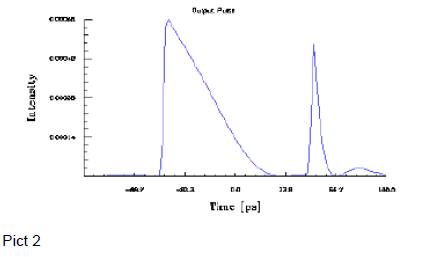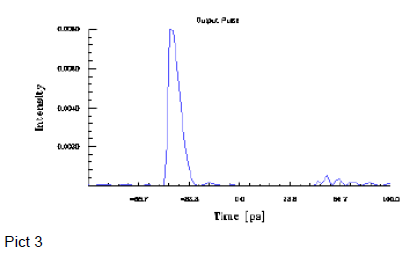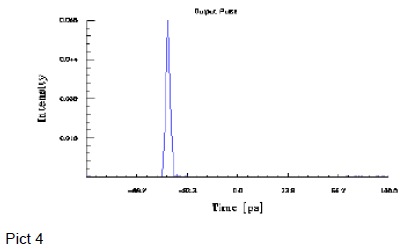Reference
L. R. Chen et. al., ‘Ultrashort pulse reflection from fiber gratings: A numerical
investigation,’ J. Lightwave Technol., vol.15, No.8, (1997), pp.1505-1512.
Description
The example demonstrates a transform-limited Gaussian pulse reflected from
uniform fiber gratings. The gratings have different index modulation values. You can
change the grating modulation index and compare the calculated results with the
published reference.
- Index modulation = 4.356e-5. Click the Calculation button and compare the result (Pict 1) with Fig 1(a) from Reference.
- Index modulation = 11.616e-5. Click the Calculation button and compare the result (Pict 2) with Fig 1(b) from Reference.
- Index modulation = 4.356e-4. Click the Calculation button and compare the result (Pict 3) with Fig 1(c) from Reference.
- Index modulation = 1.452e-3. Click the Calculation button and compare the result (Pict 4) with Fig 1(d) from Reference.
The main result is reshaping the reflected pulse. As the grating strength increases,
there is a separation of the reflected pulse into two distinct components.





